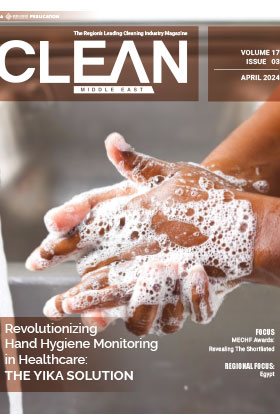
Cleaning a commercial facility may seem simple for the common man but only the experts know how much effort, time and methodology it takes to thoroughly clean and disinfect a facility. But there are some commercial cleaning mistakes that business owners and employees often make, even without realising it. These mistakes can end up costing your business hundreds of thousands of dollars in repairs and maintenance if you're not careful.
Here are some of the top commercial cleaning mistakes you should avoid:
- Scrubbing spilled stains
If you're making the mistake of scrubbing spilled stains in your carpet or upholstered office furniture, you risk ruining them with permanent marks. Scrubbing spilled stains may help to set the stain instead of removing it.
- Treating every cleaner as a disinfectant
The COVID-19 pandemic has established that every cleaning chemical doesn't disinfect the surface you're trying to clean. So, it's important to read the labels. Use cleaners designed for the surface you're trying to clean and ensure you use a disinfectant spray for the recommended time.
- Assuming a surface is clean
Microscopic bacteria and viruses can lurk on a variety of surfaces. So, relying on your eyes to determine if your counters and tables or workstations are clean isn't a great idea. Instead of assuming a surface is clean, it's ideal to clean your surfaces thoroughly after each use or at least by the end of the day. Also, consider taking advantage of professional janitorial services to clean your surfaces effectively.
- Selecting the wrong commercial cleaning provider
Choosing the wrong commercial cleaning service provider can be bad for business. A commercial cleaning service provider who lacks the experience and expertise you need to get your facility in shape can get costly, especially when there is an emergency. If the commercial cleaning service provider has a poor reputation for using unvetted contractors, you can also put your business at risk for theft and other liabilities. So, it's important to avoid this mistake by checking references, getting recommendations and reviewing testimonials of the commercial cleaning service provider you are considering.
To learn more about the common mistakes in the cleaning industry, we spoke to some industry experts.
 Kym Mayes – Head of Soft Services, Emrill
Kym Mayes – Head of Soft Services, Emrill
While some cleaning methodologies can vary depending on the environment and client requirements, the cleaning mistakes we witness are actually quite common and can be observed in facilities ranging from residential towers and offices to healthcare facilities and malls. These mistakes are almost always completely avoidable. It is the responsibility of the organisation responsible for delivering cleaning services to ensure processes and procedures meet recognised standards and employees are given sufficient training to carry out tasks safely and competently.
A cleaning mistake that has the potential to be dangerous is one that must be rectified immediately. Failure to implement a robust colour-coding scheme can result in cross contamination and increase the risk of communicable viruses and bacteria. As the first facilities management provider in the UAE to achieve BICSc accreditation, Emrill follows a strict colour-coding system. For example, green equipment is used exclusively in areas where food is stored, prepared or served. Equipment that is red is used to clean washrooms and baby changing facilities. Yellow equipment is used exclusively in healthcare facilities to clean surfaces inside high-risk and infection rooms. Colour coding equipment makes it easy for all employees to identify which equipment can be used in each area, reducing the risk of cross contamination and prioritising the health and safety of staff, residents and visitors.
Another common mistake that can be avoided by following BICSc standards is not providing cleaning staff with adequate training. Even if a cleaning services provider colour codes equipment and ensures processes meet BICSc guidelines, if staff are not given enough training to follow these processes, the services will fall short of what is required. In addition to the mandatory induction training all Emrill employees receive, Emrill also provides ongoing refresher training for existing staff via our Centre of Excellence. Training is delivered in bespoke practical training rooms that simulate a diverse range of environments and on-ground training facilities.
Training also extends to providing high levels of customer service. It is a mistake to think cleaning teams’ only role is to clean. Often, these employees are customer-facing, and should therefore be given the tools they require to interact with customers with confidence and in a competent manner. This holistic view of training empowers Emrill’s employees to handle any situation that arises and gives our clients the peace of mind that Emrill’s staff are capable of not just providing world-class cleaning services but can also communicate with residents and visitors appropriately.
It is also critical that cleaning service providers instruct employees on how to select and use the right tools and cleaning agents for the task in hand. Selecting the wrong piece of equipment can lead to avoidable damage, such as surfaces being scratched, or even accidents, which can happen if surfaces are left too wet. Similarly, using the wrong cleaning agent or the incorrect amount of a chemical can lead to suboptimal results. To avoid this, Emrill clearly labels its eco-friendly cleaning agents, provides ongoing training and utilises an auto-dosing system, which automatically dispenses the correct cleaning chemical mixture and eliminates the risk of human error and incorrect dilutions.
In addition to training, Emrill ensures high levels of supervision. A lack of supervision can not only lead to standards slipping but can also mean any mistakes become embedded because they have not been identified and rectified in a timely manner. Supervisors are not only there to check standards, they must also act as mentors and provide on-the-spot training and development opportunities to continuously upskill the teams they manage.
Ultimately, every cleaning mistake can be avoided if attention to detail is given at every stage of cleaning and by every member of the team. Through education and supervision, Emrill’s employees are encouraged to take pride in their work and pay particular attention to detail. Implementing processes and procedures results in employees understanding the importance of cleaning practices. It allows them to deliver and provide a standardised level of service across the clients and sectors they cover.
Mike Sawchuk, Sawchuk Consulting assists BSCs
Proper cleaning safely removes unwanted soils and pathogens from surfaces and the air. Unfortunately, many cleaning operations are not doing this. Instead, they are polluting the indoor environment by moving—not removing—the soils and pathogens, cross-contaminating surfaces, and introducing harmful chemicals into the facility through unnecessary or improper disinfection.
With this in mind, below are the seven most common mistakes cleaning operations make, including failing to:
- Validate their cleaning results.Many cleaning operations only communicate with stakeholders when there is a problem. It is vital to know the expectations of all parties involved upfront. Then, the best cleaning operations measure, record, monitor, act on, and report based on real-time ongoing evidence-based data. This ensures they are cleaning effectively, driving continuous improvement, and addressing any stakeholder concerns.
- Use the right procedures and products. Using products or procedures because “we always have” is not acceptable. The best cleaning operations rely on side-by-side testing and other means to compare the outcomes of what is currently being used to new technologies and processes. This ensures the use of the most effective, efficient, and safest, products and protocols.
- Recruit, hire, and retain the right people.If new hires have the right attitude and traits, they can be taught the necessary skills and will gain experience. Most important is to ensure every team member is aligned with the company’s/organisation’s vision, mission, core values, and guiding principles. If a hiring mistake is made, it should be fixed before it can negatively impact the team’s productivity and morale.
- Create effective onboarding, education, and training programs.As the cleaning profession becomes increasingly complex, effective onboarding and continuing education and training are essential to reducing employee turnover, developing an effective and efficient team, and driving continuous improvement.
- Provide effective leadership.Good managers are often mistaken for effective leaders. The top cleaning operations have leaders capable of creating a work culture and environment where employees are engaged, empowered, motivated, and capable of producing best-in-class results.
- 6. Disinfect properly.Too many cleaning operations over or under use disinfectants, both of which put cleaning staff and facility occupants, visitors, and assets in harm’s way. The biggest mistakes in this area are (a) failing to follow the manufacturer’s instructions, including allowing the required dwell time, (b) not adjusting disinfecting procedures up or down based on the current threat level, (c) not using a disinfectant specifically made to eliminate the pathogen(s) of concern, and (d) not practicing targeted hygiene to disinfect before and after a potential transmission or high-traffic use of a surface or area.
- Know where they stand.No cleaning operation can know how its performance compares to best-in-class without conducting an integrated and comprehensive assessment. This means assessing the operation’s products, procedures, protocols, policies, and, most importantly, people, including leadership—the driver and fuel of any cleaning operation. The best cleaning operations know how and why they do what they do, which allows them to create the highest level of clean, healthy, and safe at the lowest overall cost.
Making commercial cleaning mistakes can end up costing you in the end. But luckily, you can count on reliable janitorial services to keep your business in order and clean.


.jpg)
 Search
Search